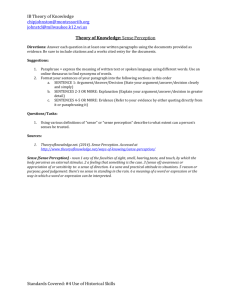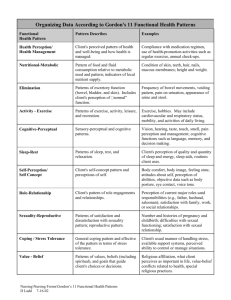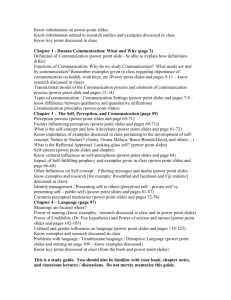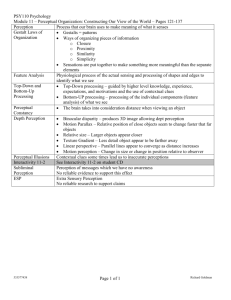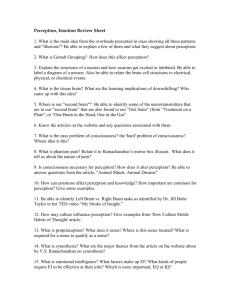Goldstein`s Sensation and Perception NOW
advertisement
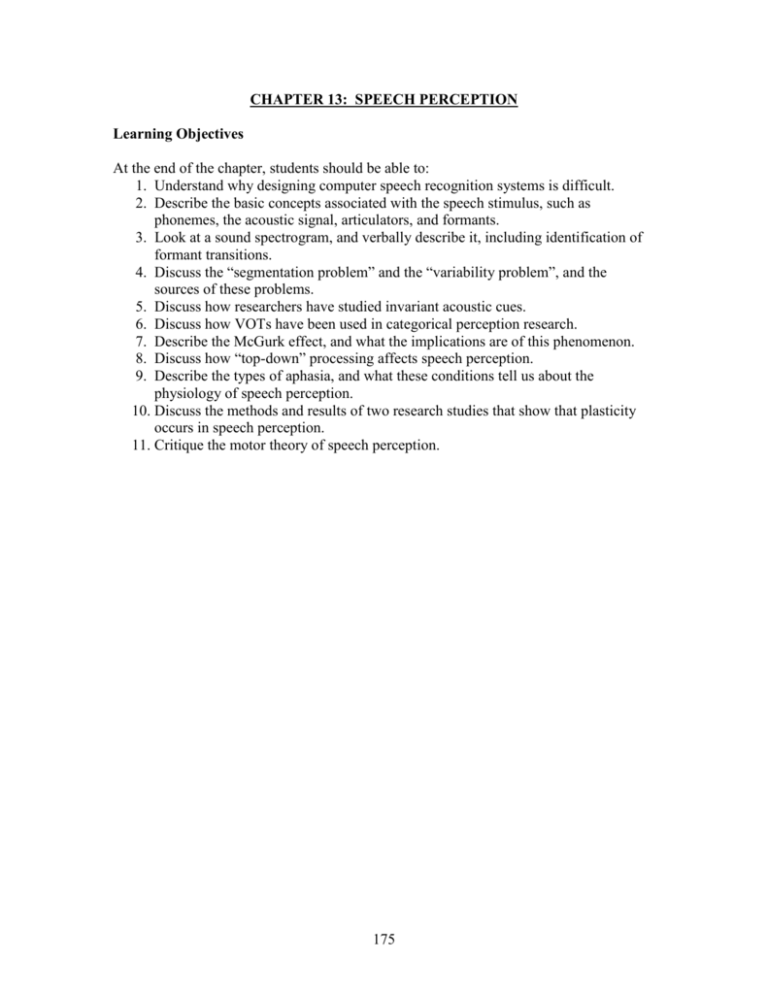
CHAPTER 13: SPEECH PERCEPTION Learning Objectives At the end of the chapter, students should be able to: 1. Understand why designing computer speech recognition systems is difficult. 2. Describe the basic concepts associated with the speech stimulus, such as phonemes, the acoustic signal, articulators, and formants. 3. Look at a sound spectrogram, and verbally describe it, including identification of formant transitions. 4. Discuss the “segmentation problem” and the “variability problem”, and the sources of these problems. 5. Discuss how researchers have studied invariant acoustic cues. 6. Discuss how VOTs have been used in categorical perception research. 7. Describe the McGurk effect, and what the implications are of this phenomenon. 8. Discuss how “top-down” processing affects speech perception. 9. Describe the types of aphasia, and what these conditions tell us about the physiology of speech perception. 10. Discuss the methods and results of two research studies that show that plasticity occurs in speech perception. 11. Critique the motor theory of speech perception. 175





